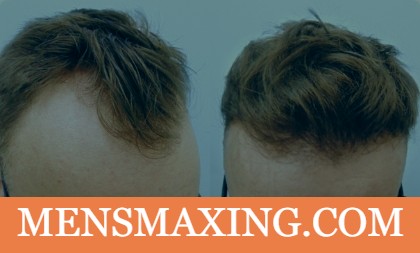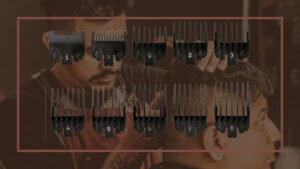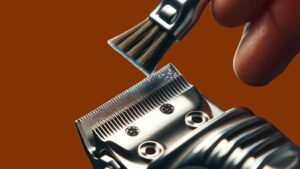
Minoxidil for Hair Regrowth: Understanding the Benefits and Risks
Many people who experienced hair loss started taking minoxidil to regrow their hair (hairline, eyebrows or even for a beard growth).
If you’re losing hair and it’s still in the early stages, Minoxidil can help grow your hair back and prevent more hair loss.
Minoxidil was initially tested in the 1960s as a medication for high blood pressure. However, it was discovered that it could promote hair growth in certain patients. Initially seen as a harmless side effect by doctors, a topical version of Minoxidil was developed in the late 1980s to treat hair loss in men, followed by women in 1992.
Today, Minoxidil is the only topical treatment approved by the FDA that has been clinically proven to regrow hair.
How Minoxidil Works for Hair Regrowth?

Minoxidil helps with hair loss caused by a genetic condition called “Androgenetic alopecia”. This condition makes hair follicles shrink over time, leading to thin and fine hair, and eventually no hair at all.
Minoxidil widens the blood vessels, allowing more oxygen-rich blood to reach the hair follicles.
It also helps increase the size of the follicles, leading to thicker and stronger hair. Additionally, Minoxidil makes the hair growth phase longer, resulting in more hair growth.
Benefits of Using Minoxidil For Hair Regrowth
Using minoxidil for hair regrowth has two main benefits: growing new hair or thickening existing hair.
Many users notice visible improvements in hair density and thickness within a few months of starting treatment. However, individual results may vary.
Another advantage of minoxidil is its ease of use. It comes in liquid or foam forms and can be applied directly to the scalp.
The biggest part about why the majority of people use minoxidil, it’s because it doesn’t need any prescription, you can walk in any drugstore near you and buy it immediately (unlike finasteride and other hair regrowth treatments).
Who Can Benefit Most From Using Minoxidil?
Minoxidil can help with hair loss, but it’s not for everyone. It works best for people with genetic hair loss. If your hair loss is due to other reasons, like a medical condition or medication, minoxidil may not work as well.
Risks and Side Effects of Minoxidil

Minoxidil is usually safe, but it can have some side effects depending on the individual.
The main one is scalp irritation, causing itching, redness, and dryness. Some people may also experience increased hair shedding or changes in hair texture or color.
Sometimes, minoxidil may have serious side effects like chest pain, fast heartbeat, or trouble breathing.
How to use Minoxidil
- – Apply minoxidil directly to the scalp, not to the hair itself.
- – Use a dropper or spray bottle to apply minoxidil evenly to the affected areas.
- – Massage the minoxidil into your scalp using your fingertips.
- – Allow the minoxidil to dry completely before styling your hair.
- – Use minoxidil twice daily, as directed on the package.
Minoxidil vs. Other Hair Regrowth Treatments
Related Article: Best Laser Caps For Hair Growth: Product Reviews
Minoxidil is commonly used for hair regrowth, but there are other options like:
- Finasteride: Finasteride is a pill that reduces a hormone called DHT, which causes hair loss. It’s often prescribed for male pattern baldness. Minoxidil and finasteride can be used together for better results.
- Hair transplant surgery: This surgical procedure involves the transplantation of hair follicles from a donor area to areas with thinning or no hair. It is a more invasive and costly option but can provide permanent results.
- Laser therapy: Low-level laser therapy (LLLT) devices emit red light to stimulate hair growth. It is typically used in the form of combs, helmets, or caps. LLLT may improve blood flow and promote hair follicle activity.
- Nutritional supplements: Supplements or natural remedies such as biotin, vitamins, and minerals, are well known for promoting hair growth and improving hair health. However, their effectiveness is very low compared to the minoxidil
- Topical creams and shampoos: Various topical formulations contain ingredients like ketoconazole, saw palmetto, or caffeine. These products claim to block DHT or promote hair growth, but their effectiveness may vary, and scientific evidence supporting their claims is limited.
Frequently Asked Questions About Minoxidil

Here are some answers to common questions about minoxidil:
While minoxidil is not currently approved for use on the face, some people have reported success using it to promote beard growth.
Minoxidil may be able to regrow hair on some bald spots, but it may not be effective for all types of hair loss.
It can take several months of consistent use before you see noticeable results.
Success Stories from Minoxidil Users
Many people have had success using minoxidil to regrow hair and improve the appearance of thinning hair. Here are some real-life success stories from minoxidil users:
– “I have been using Minoxidil 5% for about 20 years. I had thick hair and the top was thinning. I was starting to see my scalp through my thick hair and a formation of a balding circle. It helped a lot the first year for sure. Now, age 59, the front hairline is thinning and rising a bit, but I still have a modest amount of hair on top, but there is still an obvious balding circle. Hair shafts are thinner there as well. So I would say it helps to prevent totally bald areas, but for me, it hasn’t given me back the thick hair I once had on top.” – Kenneth Jones
– “I have been using it for 2.5 months. Now I see my small baby hair increasing some height. I am 23 year old and I lost my hair from front (line area), and I also use derma roller. But I don’t know when it will seem like normal black hair and cover my front scalp area. Today I notice My Baby hair noticeable change But It Having a silver color. I hope in 3 months it will look like normal hair and cover my scalp.” – Dhaval Parmar
– “For me it worked. I am 30 years old and since the age of 28 I started having hair fall. After using Minoxidil 5 percent with finasteride topical solution, derma roller, biotin tablets and biotin shampoo I am getting my lost hair back. Results started within 4 months. Hope I can be useful to someone. Good luck guys.” – Bruce Beznet
Conclusion and Final Thoughts
Minoxidil helps hair grow back and makes thinning hair look better. While there are some potential risks and side effects to be aware of, many people have had success using minoxidil to grow thicker, healthier hair.
Speak to your doctor first before using minoxidil. Don’t simply buy it from the nearest drugstore.
You need to be patience, persistence, and with the right treatment plan, you can take control of your hair loss and feel confident and youthful in your appearance once again.


